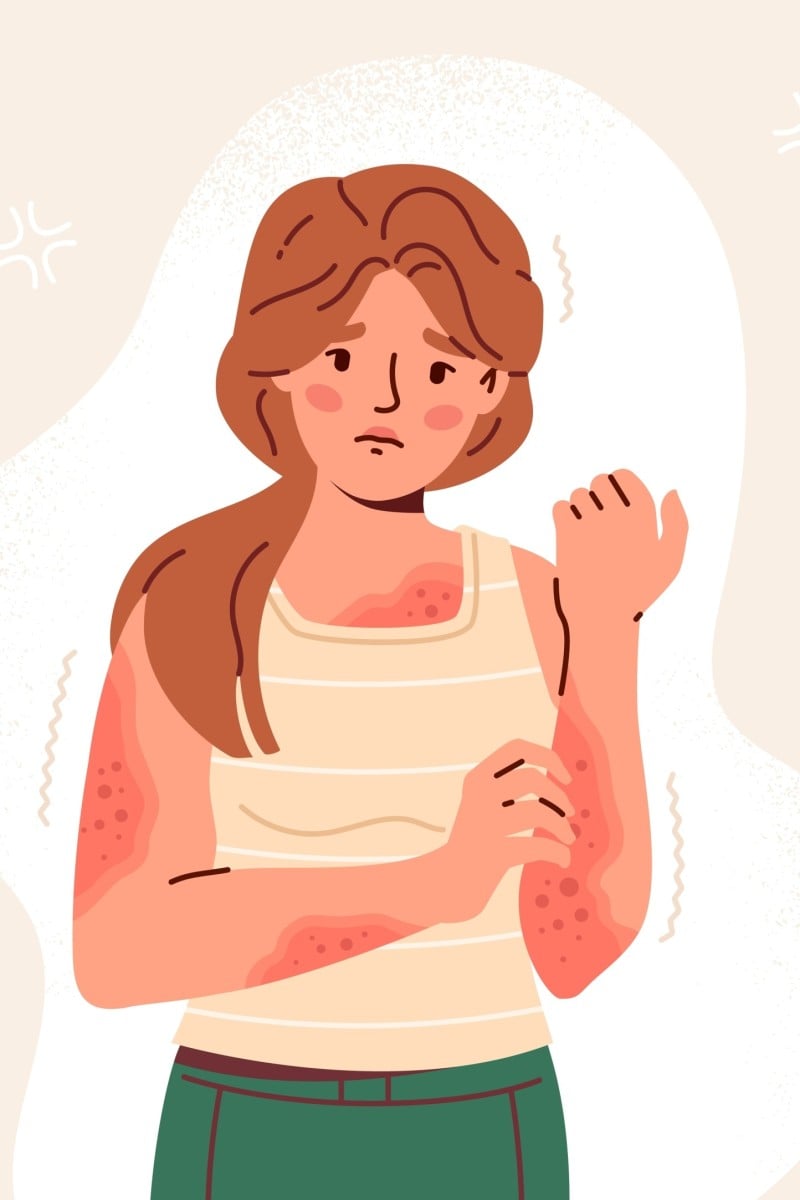
Dermatologist’s coolest tips for keeping heat rash at bay in the hot, humid summer months
- Wearing loose clothing and staying hydrated can help with this skin condition, also called prickly heat or miliaria
 Heat rash is more common in hot and humid places. Photo: Shutterstock
Heat rash is more common in hot and humid places. Photo: ShutterstockThe summer holidays are here, and so is the season for sun, sand and red itchy bumps. Dr Kingsley Chan, a dermatologist based in Hong Kong, says that heat rashes can be a struggle for teenagers during hot weather.
Also called prickly heat or miliaria, this skin condition occurs when sweat glands get blocked because of heat and high humidity. Sweat is unable to get through the pores of the skin, which becomes irritated and causes a rash to develop.
There are different severities of heat rash. The mildest and most common types look like small, clear spots filled with fluid, and the bumps can break easily. More serious symptoms can include inflamed bumps that are itchy or painful.
“Heat rash usually causes some discomfort but gets better on its own within days. It is definitely not infectious and cannot spread to other people,” Chan explained.
He explained that while the spots can appear anywhere on the body, they are usually found on areas with skin folds. These can be the elbows, neck, armpits, and where our clothes constantly rub against the skin.
5 foods to cool you down this summer, according to traditional Chinese medicine
The dermatologist added that some studies have suggested that heat rash is more prevalent in hot and humid climates.
“Heat rash is widespread in hot and humid places and has about a 30 per cent chance of occurring in young adults. We are also looking at hotter summers [because of climate change], so we can also expect heat rash to become a more common skin condition.”
Teens are more prone to heat rash compared to adults. During puberty, they experience increased sebum production, which can lead to oily skin.
Their skin is also more easily irritated from trapped sweat, and they are more likely to engage in outdoor activities during summertime. This combination can make it easier for their sweat ducts to become clogged and develop more severe forms of heat rash.
“In such rare cases, doctors may prescribe steroids to get rid of the inflammatory symptoms. Usually, we just give topical creams such as corticosteroids to help relieve itching and inflammation because the rash resolves on its own,” he said.
Chan pointed out that it should take a few days for the symptoms of heat rash to disappear. It is best to see a dermatologist if the spots become firm and painful or if they burst and pus oozes out, as these could mean there is an infection.
He added: “And of course, if you don’t leave the spots alone or if you squeeze them, there might be a chance of scarring or skin pigmentation when your skin heals.”
There are a few simple ways to prevent heat rash. These include wearing loose clothing, staying in air-conditioned areas and keeping the body hydrated in hot weather.
Taking cold showers can help, too, but be sure not to do so too frequently, as this can strip the natural oils that protect our skin.
Alternatively, you can try making your own cooling essential oil spray or cooling compress. These are great for use on-the-go or when you are relaxing at home. When using essential oil, you should always do a patch test by applying a few drops of the diluted solution on the inner forearm and waiting one day to see if there is any redness or irritation.
Hong Kong’s winters are getting shorter while summers are simmering for longer
Cooling spray
What you need:
-
distilled water
-
peppermint, tea tree, or lavender essential oil
-
witch hazel
-
a small spray bottle
Fill the spray bottle three-quarters full with distilled water. Add in witch hazel and five to 10 drops of essential oil. Shake the mixture and store it in the fridge for at least an hour before using for best results.
Cooling pad
What you need:
-
a soft, thin towel
-
water
-
peppermint, tea tree, or lavender essential oil
Add two to three drops of essential oil to a bowl of water. Soak the towel thoroughly in the mixture. Wring the towel until it is slightly damp but not dripping. Place the towel in a sealed plastic bag and store it in the freezer for 15 minutes before use.
